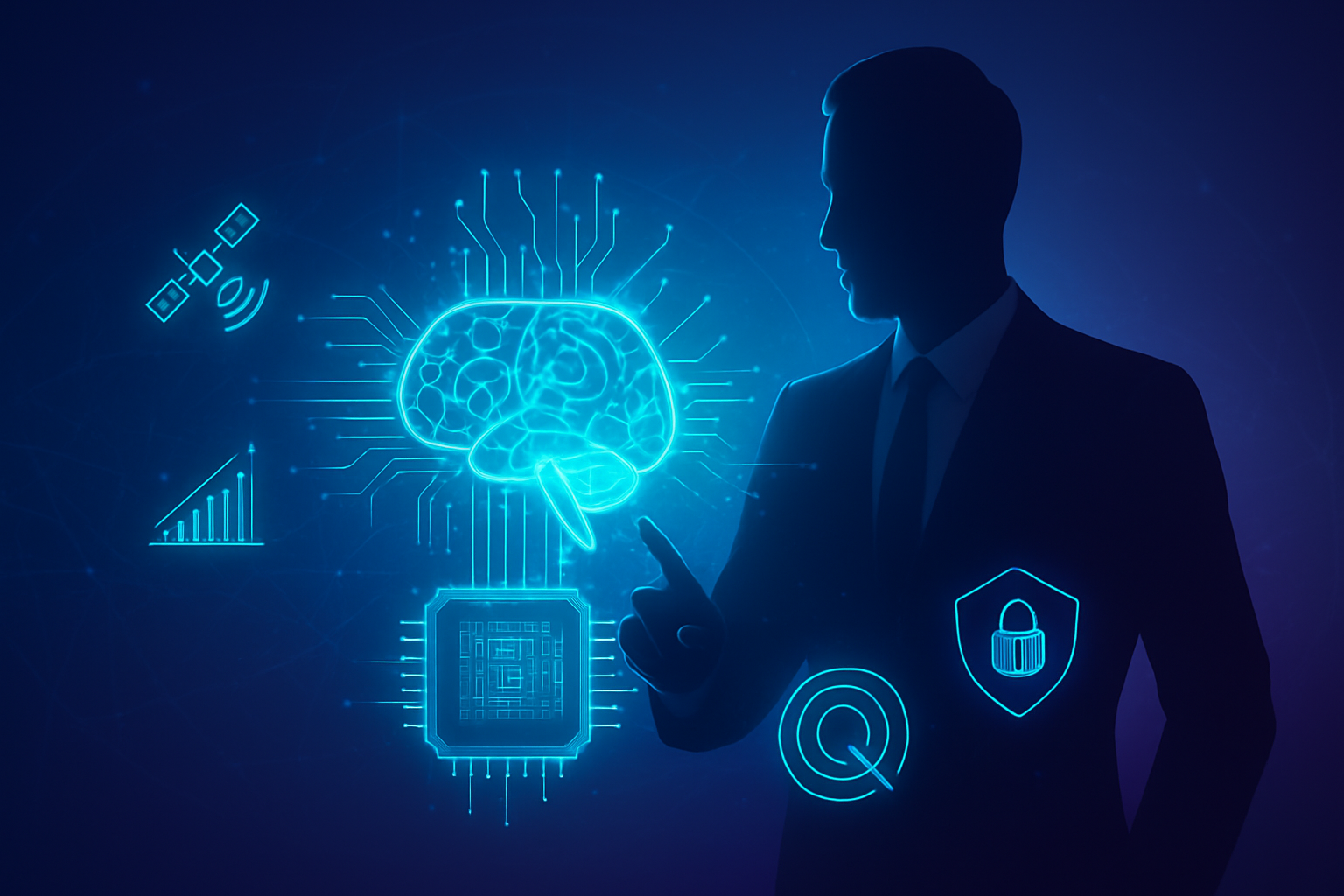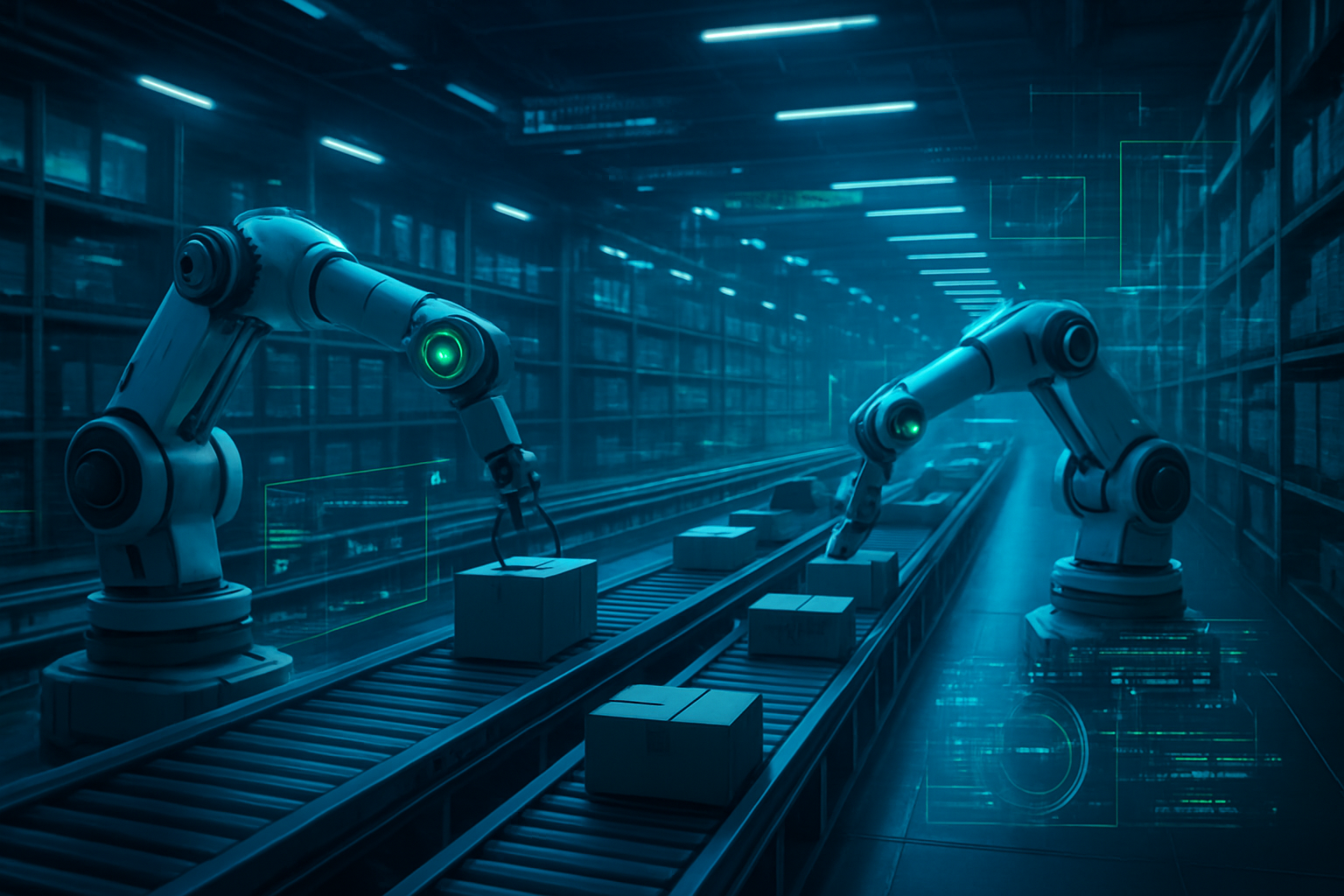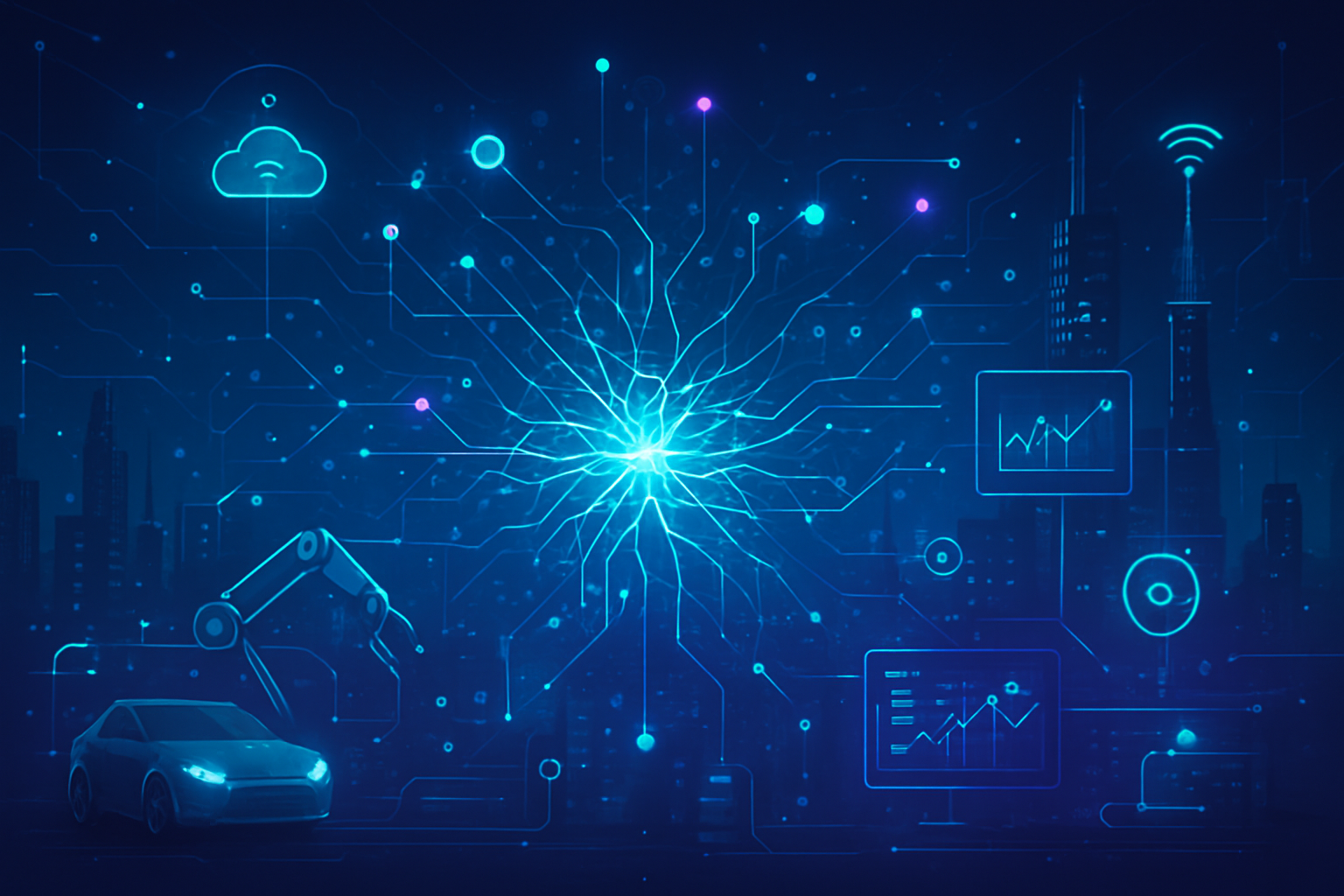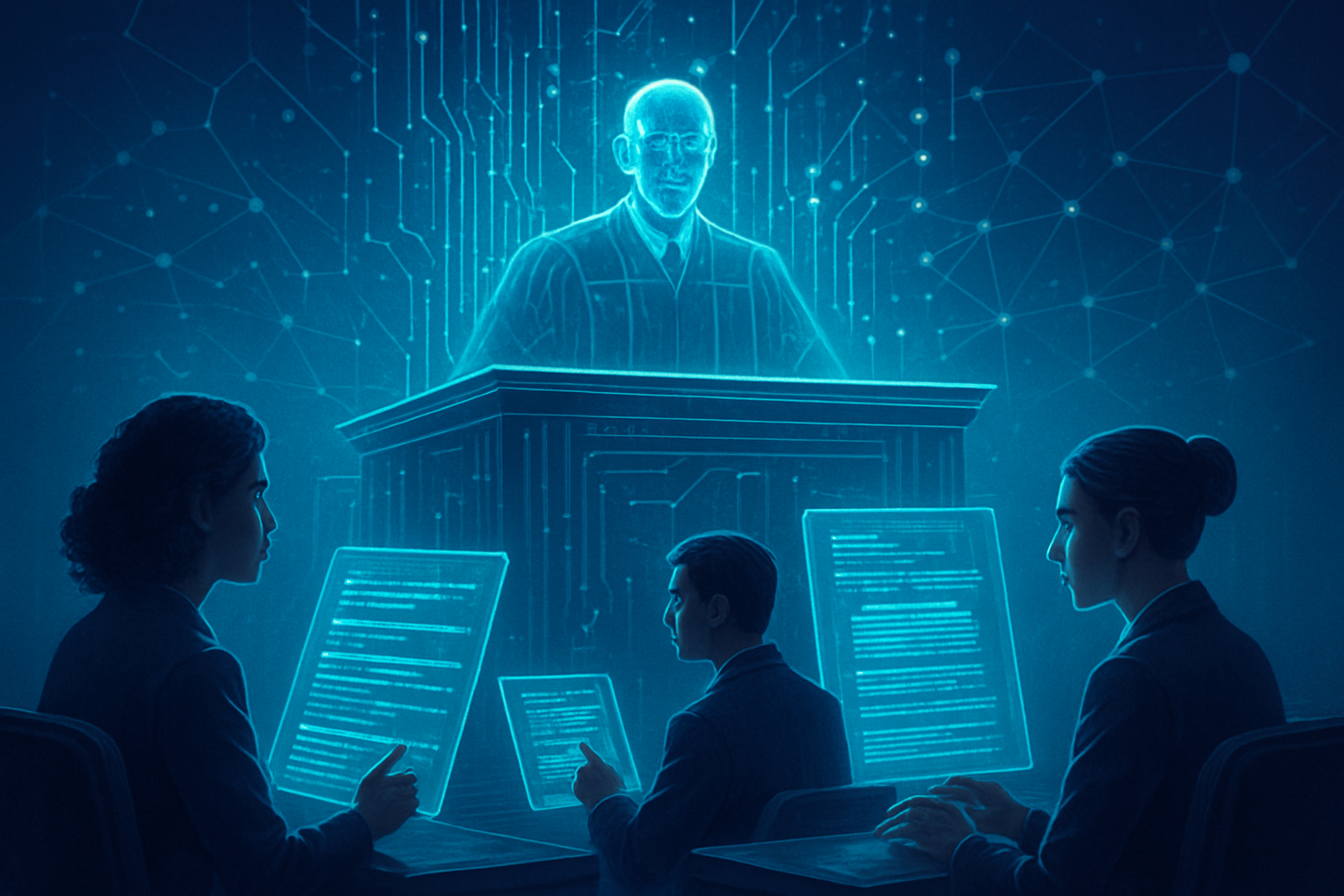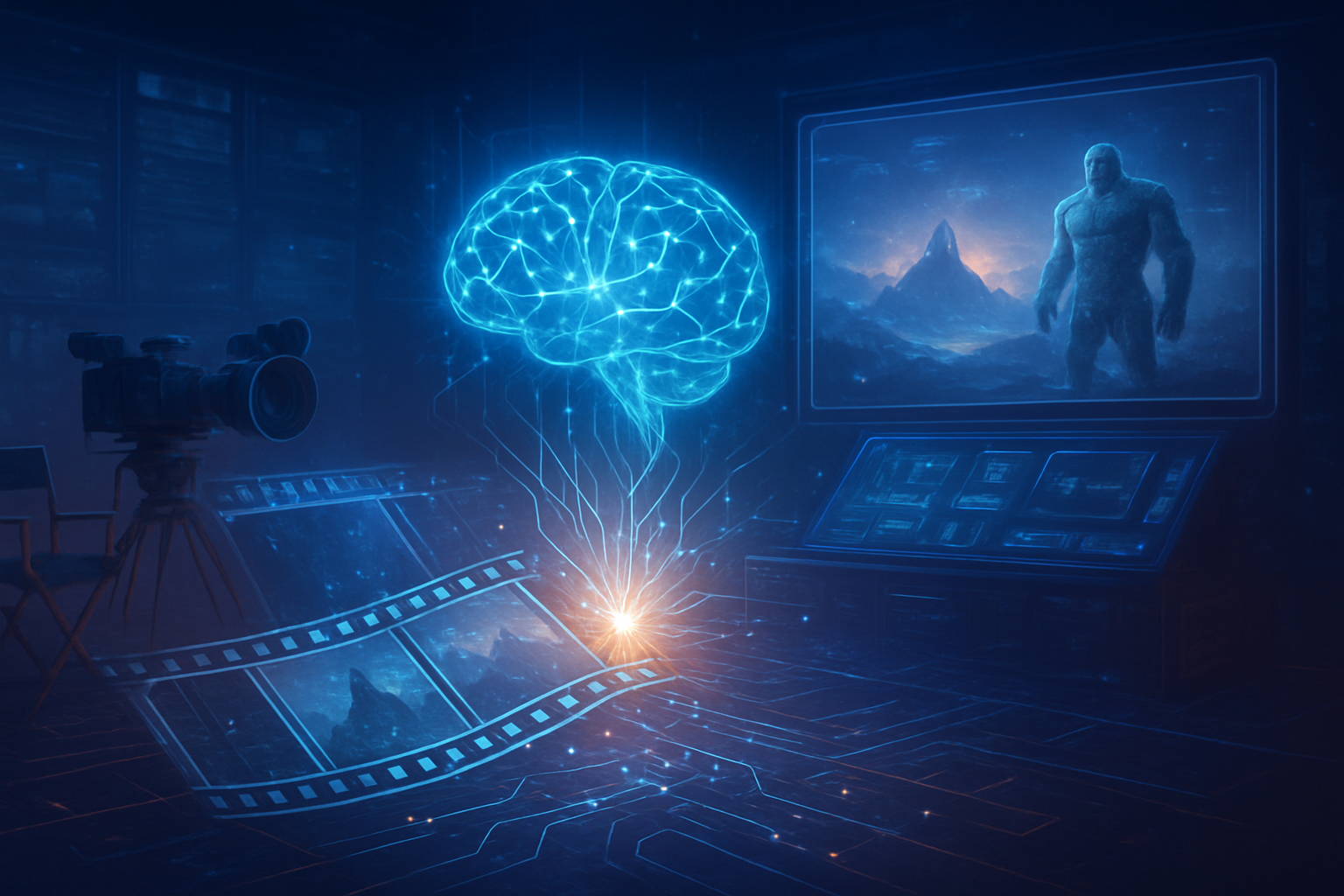Geneva, Switzerland – December 1, 2025 – SEALSQ Corp (NASDAQ: LAES), a company at the forefront of semiconductors, PKI, and post-quantum technologies, has captured significant market attention following the strategic appointment of Dr. Ballester Lafuente as its Chief of Staff and Group AI Officer. The announcement, made on November 24, 2025, has been met with a strong positive market reaction, with the company's stock experiencing a notable surge, reflecting investor confidence in SEALSQ's dedicated push into artificial intelligence. This executive move underscores a growing trend in the tech industry where specialized AI leadership is seen as a critical catalyst for innovation and market differentiation, particularly for companies navigating the complex interplay of advanced technologies.
The appointment of Dr. Lafuente is a clear signal of SEALSQ's intensified commitment to integrating AI across its extensive portfolio. With his official start on November 17, 2025, Dr. Lafuente is tasked with orchestrating the company's AI strategy, aiming to embed intelligent capabilities into semiconductors, Public Key Infrastructure (PKI), Internet of Things (IoT), satellite technology, and the burgeoning field of post-quantum technologies. This comprehensive approach is designed not just to enhance individual product lines but to fundamentally transform SEALSQ's operational efficiency, accelerate innovation cycles, and carve out a distinct competitive edge in the rapidly evolving global tech landscape. The market's enthusiastic response highlights the increasing value placed on robust, dedicated AI leadership in driving corporate strategy and unlocking future growth.
The Architect of AI Integration: Dr. Lafuente's Vision for SEALSQ
Dr. Ballester Lafuente brings a formidable background to his new dual role, positioning him as a pivotal figure in SEALSQ's strategic evolution. His extensive expertise spans AI, digital innovation, and cybersecurity, cultivated through a diverse career that includes serving as Head of IT Innovation at the International Institute for Management Development (IMD) in Lausanne, and as a Technical Program Manager at the EPFL Center for Digital Trust (C4DT). Dr. Lafuente's academic credentials are equally impressive, holding a PhD in Management Information Systems from the University of Geneva and an MSc in Security and Mobile Computing, underscoring his deep theoretical and practical understanding of complex technological ecosystems.
His mandate at SEALSQ is far-reaching: to lead the holistic integration of AI across all facets of the company. This involves driving operational efficiency, enabling smarter processes, and accelerating innovation to achieve sustainable growth and market differentiation. Unlike previous approaches where AI might have been siloed within specific projects, Dr. Lafuente's appointment signifies a strategic shift towards viewing AI as a foundational engine for overall company performance. This vision is deeply intertwined with SEALSQ's existing initiatives, such as the "Convergence" initiative, launched in August 2025, which aims to unify AI with Post-Quantum Cryptography, Tokenization, and Satellite Connectivity into a cohesive framework for digital trust.
Furthermore, Dr. Lafuente will play a crucial role in the SEALQUANTUM Initiative, a significant investment of up to $20 million earmarked for cutting-edge startups specializing in quantum computing, Quantum-as-a-Service (QaaS), and AI-driven semiconductor technologies. This initiative aims to foster innovations in AI-powered chipsets that seamlessly integrate with SEALSQ's post-quantum semiconductors, promising enhanced processing efficiency and security. His leadership is expected to be instrumental in advancing the company's Quantum-Resistant AI Security efforts at the SEALQuantum.com Lab, which is backed by a $30 million investment capacity and focuses on developing cryptographic technologies to protect AI models and data from future cyber threats, including those posed by quantum computers.
Reshaping the AI Landscape: Competitive Implications and Market Positioning
The appointment of a dedicated Group AI Officer by SEALSQ (NASDAQ: LAES) signals a strategic maneuver with significant implications for the broader AI industry, impacting established tech giants and emerging startups alike. By placing AI at the core of its executive leadership, SEALSQ aims to accelerate its competitive edge in critical sectors such as secure semiconductors, IoT, and post-quantum cryptography. This move positions SEALSQ to potentially challenge larger players who may have a more fragmented or less centralized approach to AI integration across their diverse product lines.
Companies like SEALSQ, with their focused investment in AI leadership, stand to benefit from streamlined decision-making, faster innovation cycles, and a more coherent AI strategy. This could lead to the development of highly differentiated products and services, particularly in the niche but critical areas of secure hardware and quantum-resistant AI. For tech giants, such appointments by smaller, agile competitors serve as a reminder of the need for continuous innovation and strategic alignment in AI. While major AI labs and tech companies possess vast resources, a dedicated, cross-functional AI leader can provide the agility and strategic clarity that sometimes gets diluted in larger organizational structures.
The potential disruption extends to existing products and services that rely on less advanced or less securely integrated AI. As SEALSQ pushes for AI-powered chipsets and quantum-resistant AI security, it could set new industry standards for trust and performance. This creates competitive pressure for others to enhance their AI security protocols and integrate AI more deeply into their core offerings. Market positioning and strategic advantages will increasingly hinge on not just having AI capabilities, but on having a clear, unified vision for how AI enhances security, efficiency, and innovation across an entire product ecosystem, a vision that Dr. Lafuente is now tasked with implementing.
Broader Significance: AI Leadership in the Evolving Tech Paradigm
SEALSQ's move to appoint a Group AI Officer fits squarely within the broader AI landscape and trends emphasizing the critical role of executive leadership in navigating complex technological shifts. In an era where AI is no longer a peripheral technology but a central pillar of innovation, companies are increasingly recognizing that successful AI integration requires dedicated, high-level strategic oversight. This trend reflects a maturation of the AI industry, moving beyond purely technical development to encompass strategic implementation, ethical considerations, and market positioning.
The impacts of such appointments are multifaceted. They signal to investors, partners, and customers a company's serious commitment to AI, often translating into increased market confidence and, as seen with SEALSQ, a positive stock reaction. This dedication to AI leadership also helps to attract top-tier talent, as experts seek environments where their work is strategically valued and integrated. However, potential concerns can arise if the appointed leader lacks the necessary cross-functional influence or if the organizational culture is resistant to radical AI integration. The success of such a role heavily relies on the executive's ability to bridge technical expertise with business strategy.
Comparisons to previous AI milestones reveal a clear progression. Early AI breakthroughs focused on algorithmic advancements; more recently, the focus shifted to large language models and generative AI. Now, the emphasis is increasingly on how these powerful AI tools are strategically deployed and governed within an enterprise. SEALSQ's appointment signifies that dedicated AI leadership is becoming as crucial as a CTO or CIO in guiding a company through the complexities of the digital age, underscoring that the strategic application of AI is now a key differentiator and a driver of long-term value.
The Road Ahead: Anticipated Developments and Future Challenges
The appointment of Dr. Ballester Lafuente heralds a new era for SEALSQ (NASDAQ: LAES), with several near-term and long-term developments anticipated. In the near term, we can expect a clearer articulation of SEALSQ's AI roadmap under Dr. Lafuente's leadership, focusing on tangible integrations within its semiconductor and PKI offerings. This will likely involve pilot programs and early product enhancements showcasing AI-driven efficiencies and security improvements. The company's "Convergence" initiative, unifying AI with post-quantum cryptography and satellite connectivity, is also expected to accelerate, leading to integrated solutions for digital trust that could set new industry benchmarks.
Looking further ahead, the potential applications and use cases are vast. SEALSQ's investment in AI-powered chipsets through its SEALQUANTUM Initiative could lead to a new generation of secure, intelligent hardware, impacting sectors from IoT devices to critical infrastructure. We might see AI-enhanced security features becoming standard in their semiconductors, offering proactive threat detection and quantum-resistant protection for sensitive data. Experts predict that the combination of AI and post-quantum cryptography, under dedicated leadership, could create highly resilient digital trust ecosystems, addressing the escalating cyber threats of both today and the quantum computing era.
However, significant challenges remain. Integrating AI across diverse product lines and legacy systems is complex, requiring substantial investment in R&D, talent acquisition, and infrastructure. Ensuring the ethical deployment of AI, maintaining data privacy, and navigating evolving regulatory landscapes will also be critical. Furthermore, the high volatility of SEALSQ's stock, despite its strategic moves, indicates that market confidence is contingent on consistent execution and tangible results. What experts predict will happen next is a period of intense development and strategic partnerships, as SEALSQ aims to translate its ambitious AI vision into market-leading products and sustained financial performance.
A New Chapter in AI Strategy: The Enduring Impact of Dedicated Leadership
The appointment of Dr. Ballester Lafuente as SEALSQ's (NASDAQ: LAES) Group AI Officer marks a significant inflection point, not just for the company, but for the broader discourse on AI leadership in the tech industry. The immediate market enthusiasm, reflected in the stock's positive reaction, underscores a clear takeaway: investors are increasingly valuing companies that demonstrate a clear, dedicated, and executive-level commitment to AI integration. This move transcends a mere hiring; it's a strategic declaration that AI is fundamental to SEALSQ's future and will be woven into the very fabric of its operations and product development.
This development's significance in AI history lies in its reinforcement of a growing trend: the shift from viewing AI as a specialized technical function to recognizing it as a core strategic imperative that requires C-suite leadership. It highlights that the successful harnessing of AI's transformative power demands not just technical expertise, but also strategic vision, cross-functional collaboration, and a holistic approach to implementation. As AI continues to evolve at an unprecedented pace, companies that embed AI leadership at the highest levels will likely be best positioned to innovate, adapt, and maintain a competitive edge.
In the coming weeks and months, the tech world will be watching SEALSQ closely. Key indicators to watch include further details on Dr. Lafuente's specific strategic initiatives, announcements of new AI-enhanced products or partnerships, and the company's financial performance as these strategies begin to yield results. The success of this appointment will serve as a powerful case study for how dedicated AI leadership can translate into tangible business value and market leadership in an increasingly AI-driven global economy.
This content is intended for informational purposes only and represents analysis of current AI developments.
TokenRing AI delivers enterprise-grade solutions for multi-agent AI workflow orchestration, AI-powered development tools, and seamless remote collaboration platforms.
For more information, visit https://www.tokenring.ai/.
